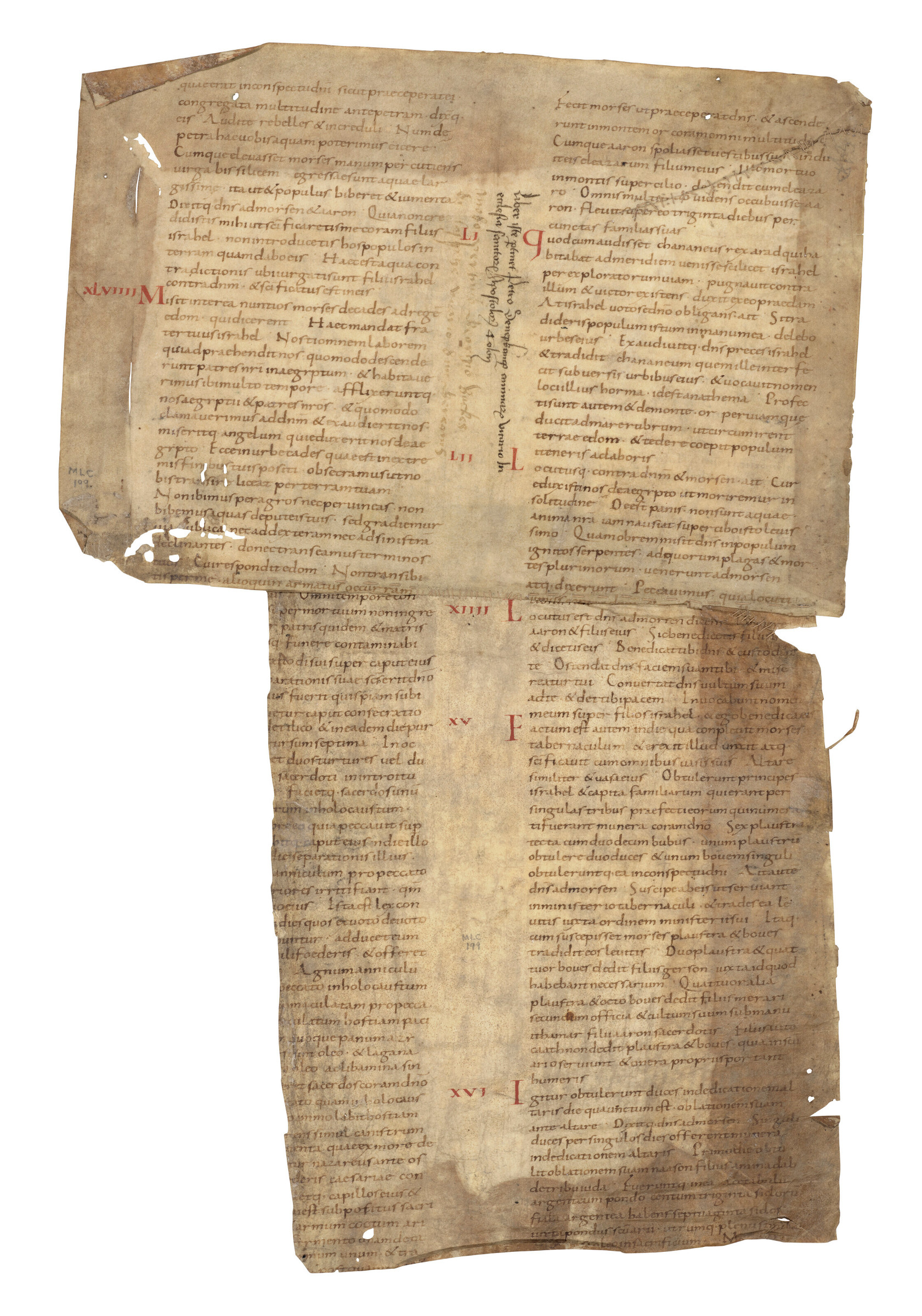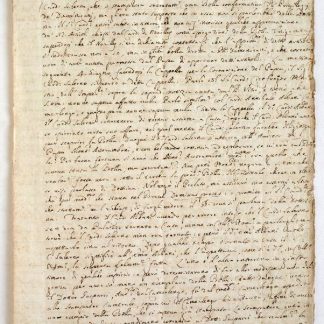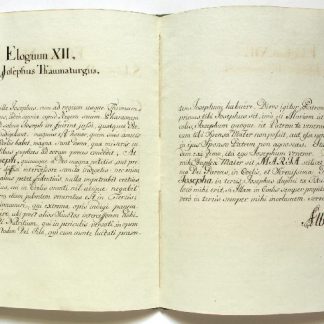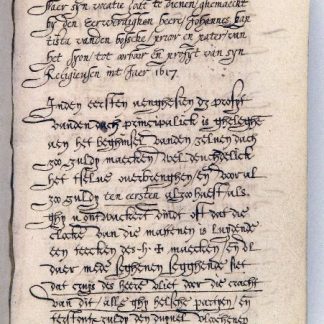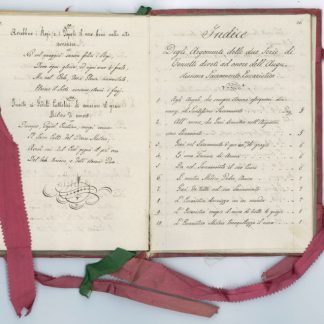Scarce example of very fine Carolingian minuscule from an 11th century German Vulgate
Two large fragments of a lectern Bible in Carolingian minuscule.
2 leaves ca. 430 × 285 mm (the two fragments stitched together). Latin manuscript on vellum. Carolingian minuscule script in iron-black ink, 2 columns and ca. 42 lines of text recto and verso on each leaf, with chapter numbers and initials in red cinnabar rustic capitals.
€ 7,500.00
Two large and incredibly scarce fragments from an 11th century Vulgate showcasing a very fine example of Carolingian minuscule. Likely these are survivals from a lectern Bible in use in Germany during the Holy Roman Empire period, with 15th century ecclesiastic provenance from the Romanesque church of St Aposteln, Cologne. The fragments comprise the upper part of one leaf and the side of another, each with chapter numbers in elegant red rustic capitals. The text of one comprises the Vulgate Numbers 6:6-19 ('Omni tempore […] fermento unam de ca[nistro]') and 6:22-7:13 ('Locutus est dominus ad Moysen […] in sacrificium'), with chapter numbers XIII-XVI at Numbers 6:22, 7:1, and 7:10, continuing on the verso; the text of the other comprising Numbers 20:9-18 ('quae erat in conspectu domini […] armatus occurram') and 20:27-21:7 ('Fecit Moyses ut praeceperat […] Peccavimus, quia locuti'), with chapter numbers XLVIII-LII at Numbers 20:14, 21:1, and 21:5, continuing on the verso from Numbers 21:16 (?) to 22:12, the chapters each starting on a new line with a red initial. This section of the Vulgate includes the story of how Moses led his people into the desert, and of their difficulties and suffering for the faith.
Recovered from use as pastedowns in a tanned leather binding, with consequent cropping and stains, the glued side of each difficult to read, the two parts sewn together in the 19th (?) century, or perhaps earlier.
Provenance: 1. Peter Sennekamp (?), vicar of the Romanesque church of St Aposteln, Cologne: inscribed in a 15th-century hand 'Liber iste pertinet Petro Senepkamp animarum vicario in ecclesia sanctorum Apostolorum Colon.'; presumably given or sold by him to: 2. Georg Buckes, vicar of the Romanesque church of St Gereon, Cologne: inscribed in another 15th-century hand 'Modo pertinet Georgio Buckes de [...] vicario sancti Gereonis'. The churches of St Gereon and St Aposteln are about a ten-minute walk from each other. 3. Colker MS 199, acquired in 1972 from Maggs.

